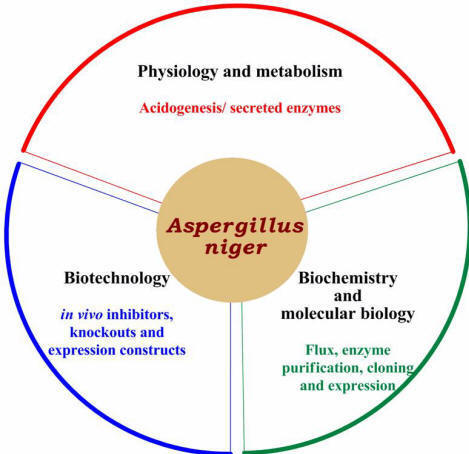Fungal Biochemistry and Biotechnology

Aspergilli are an economically important group of filamentous fungi. They are endowed with ability to produce organic acids and bioactive compounds and secrete large quantities of extra-cellular enzymes. Many of these have become mature technologies through industrial fermentations. The biochemical mechanisms by which these useful products accumulate have attracted both general and applied scientific interest for almost a century. Yet answers have been hard to come by.
An emerging approach to the understanding and exploitation of metabolic processes is metabolic/ pathway engineering. This implies a targeted and purposeful manipulation of the capabilities of an organism. In pursuing this broad research objective the acidogenic metabolism of Aspergillus niger has served us as a paradigm. The simplistic focus on carbon stoichiometry between glucose and citric acid has overlooked the close interaction exerted between the carbon and nitrogen metabolism in these fungi. Understanding regulation of carbon flux at the carbon-nitrogen interface has been a major thrust of our research.
Biochemical, molecular and genetic tools are being employed to discern and manipulate different aspects of fungal metabolism. An enhanced carbon flux through GABA shunt occurs during acidogenesis while carbon flux exits TCA cycle at citrate. NADP-glutamate dehydrogenase links TCA cycle with GABA shunt. The allosteric response of this enzyme to 2-oxoglutarate has the potential for metabolic control at the carbon-nitrogen interface of metabolism. Detailed molecular and kinetic analysis of NADP-glutamate dehydrogenase facilitated the design of an in vivo inhibitor for this enzyme. Such inhibitors provide useful insights into metabolism and regulation.
Another aspect of Aspergillus nitrogen metabolism of our interest is arginine catabolism and the enzyme arginase. Manganese limitation favors citric acid production and arginase is a Mn[II] requiring enzyme. We are exploring this connection by probing the role of arginase in Mn[II] sequestration by the fungus. Both biochemical and molecular biology approaches are being used for this purpose. Genes for arginase, NADP-glutamate dehydrogenase and a few other Aspergillus enzymes were cloned and their function characterized through protein engineering in a bacterial host.
Genetic engineering to manipulate these enzymes in vivo however requires methods that introduce foreign DNA into fungal genome. These are exciting times since many fungal genome sequences are being made available. In order to manipulate fungi through recombinant DNA techniques we have indigenously developed and established an efficient transformation protocol for Aspergillus niger. The components include – strong promoters and sC and bar as selectable markers. Through this expertise, an arginase knockout was created and is being analyzed. Such approaches are useful in dissecting out the metabolic role of a particular enzyme/protein in question. These very tools of genetic manipulation also allow us the ability to exploit Aspergillus niger – an efficient expression platform in protein production.
Heterologous expression of active proteins and the purification strategies for native and expressed proteins through dye-affinity chromatography are two important intellectual property spin-offs from our work. Anticipation is that our concerted efforts in fungal biology would lead to methods and microbial strains with desirable properties. This expertise is expected to provide research leadership to Indian Industry in the field of Fungal Biotechnology.
